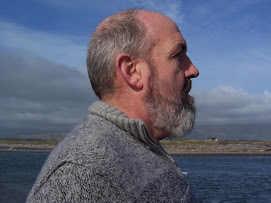Sunrise or Sunset economic development? The 21st century will be the Information century – weightless products and services will be the engine of global economic growth, fuelled by the internet. This single market of two billion people will demand increasing information processing capability - massive data centres using renewable power with a long run competitive price. Almost 10% of NZs electricity generation capacity is currently used at Tiwai Point for a 20th century business - importing alumina and exporting manufactured aluminium. NZ is internationally respected for integrity, we have a "green" brand, a stable legal and regulatory regime, and last month were confirmed as the least corrupt country in the world. These factors create a unique competitive advantage for a globally attractive data centre facility drawing on renewable Manapouri energy. The information industry is at a discontinuity point. Do we have the vision and courage to seize the opportunity and establish NZ as a trusted provider of services to the new global economy?
This post places the article in a wider context . Feel free to contribute via comments.
What can we expect this century?
Thinking about the 21st century world economy, it is not easy to project forward 90 years; imagine forecasting 2009 from 1919 – faster buggy whips anyone?
But there are some clear signals; it will be an information century, and there will be a single global economy connected using the Internet - we are still at early stages in the history of the Internet, and it will continue to evolve. There will be a massive increase in information-based products and services - entertainment, movies, e-books, and other e-things not yet invented - as all products move to this single open infrastructure.
Think how financial markets have evolved over the last 40 years since capital flows went global – recall Walter Wriston, talking about the Twilight of Sovereignty which I referenced in an earlier post. Now think what similar globalisation will mean for information-based products, and imagine the disruption as one single market is created.
Information in this century will be universally available, in any language, updatable from anywhere on the planet, at any time. It will be copied and distributed instantly at zero cost.
What will this flat world look like?
In this new economy, points of commerce will emerge (in a similar way to the entrepots of the 18th century, or the financial centres of the 20th century) – attractor locations in an otherwise flat world. Network economics will drive more and more interaction to these attractors, which will develop unassailable critical mass, securing a long-term ringside seat - top tier countries in the digital information economy. Other locations, service providers, and economies will be relegated to a second tier seating, where they jostle for position as feeders to the top tier.
We are still early in the century, and the seat tickets have not yet been claimed; for example in the entertainment and media world, NZ has a top tier seat, based on the work of Weta Workshop. As a consequence of this creative leadership, we have also built a technology capability and now NZ has eight supercomputers in the world's top 500, compared to one in Australia.
For an example of how a country has identified the future potential, consider Singapore's Intelligent Nation vision - iN2015 . The Singapore story of the last 50 years is remarkable– successfully establishing a viable and growing economy with no natural resources. Now they are looking to maintain a leadership position in the information century, and have aligned their activities - government and private sector behind this strategic vision.
Future success
What is needed to become one of these attractors – a top tier player in the information economy?
In my view the most important pre-requisite is a strategic intent to be a player – that is, a national decision that this is where we want our economy to be in 50 years time.
The characteristics needed to be successful are many, and I would not presume to know what they all are. I do know that a collection of NZ leaders, drawn from multiple disciplines and focused on the question, could develop a shortlist, and assess our current position – world leader, in the peloton, or off the pace – in each. Then we could develop a build/buy/partner approach to strengthen areas where we are not currently competitive, and position us for success.
I think it likely that physical presence, in the form of the global data centre that I suggested in the Listener article, is likely to be one – not something that will differentiate a country, but a necessary price of being in the top tier. There is also the related infrastructure - power, bandwidth and international connectivity, and when I have talked with people this is the area where the discussion has focused. There are lots of reasons why we could not build such a facility – we don't have the funds to invest, there is no payback, there will be even less jobs for a data centre than for an aluminium smelter, we don't have the bandwidth, we don’t have the .... In my view these technology and infrastructure issues can be solved by investment.
The strategic assets that a country will need to claim and retain a top tier position are a lot more difficult to secure simply by investment - assets such as trust, integrity, a stable legal and regulatory regime, and good relations with both the West and Asia (the Internet economy is moving inexorably to the population centres of China and India). These assets are core to New Zealand values, and we need to protect and nurture our current leadership position in these (for example NZ has the least corrupt public sector in the world according to the Transparency International annual survey)
People are the third essential ingredient (after technology and values). As life in the world becomes more difficult (crowding, pollution, climate, traffic, violence - pick your own dystopian trigger), New Zealand becomes an increasingly attractive place to live. We have a special place in the world's consciousness as an accessible and friendly Shangri-la; how many people, when they hear you are from NZ say "Oh, I've always wanted to go there"? If we can attract creativity and build more components needed for success in the digital information economy, there is no reason why we should not sit in a top tier seat.
The big question
The top tier seats will be claimed over the next 10-20 years. To get one will require focused strategic thinking, which is then transformed into action, by government, private sector investors and individuals. Are we up to it?
still you know it seems
it would easier sometimes to change the past"








